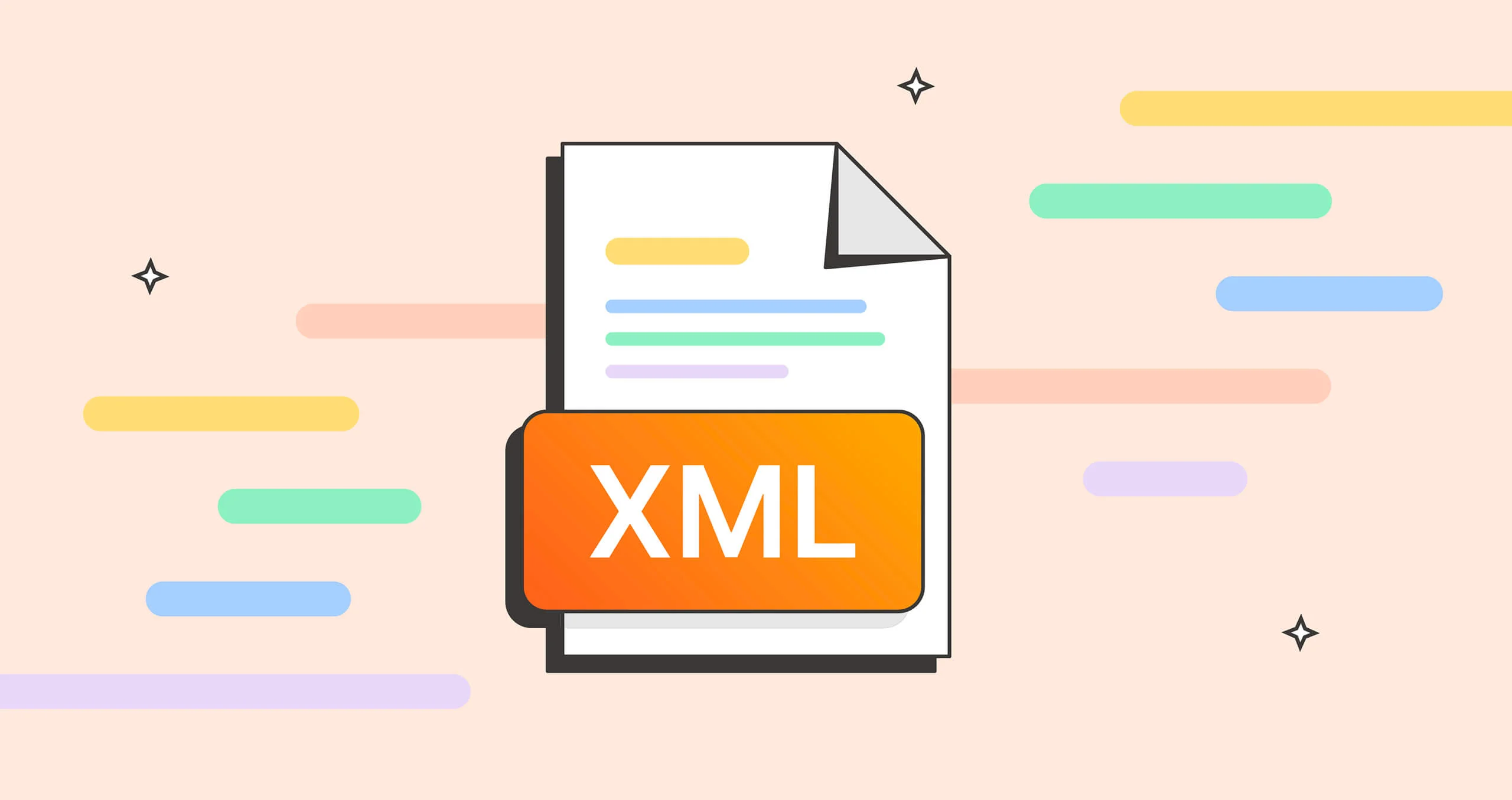 Backend Development
Backend Development
 XML/RSS Tutorial
XML/RSS Tutorial
 How to Efficiently Stream and Parse Gigabyte-Sized XML Files
How to Efficiently Stream and Parse Gigabyte-Sized XML Files
How to Efficiently Stream and Parse Gigabyte-Sized XML Files
Sep 18, 2025 am 04:01 AMTo efficiently parse GB-level XML files, streaming parsing must be used to avoid memory overflow. 1. Use streaming parsers such as Python's xml.etree.iterparse or lxml to process events by event and call elem.clear() in time to release memory; 2. Only process target tag elements, filter irrelevant data through tag names or namespaces, and reduce processing volume; 3. Support streaming reading from disk or network, combining requests and BytesIO or directly using lxml iterative file objects to achieve download and parsing; 4. Optimize performance, clear parent node references, avoid storing processed elements, extract only necessary fields, and can be combined with generators or asynchronous processing to improve efficiency; 5. Presegment of large files can be considered for presegment files, converting formats, or using distributed tools such as Spark. The core is streaming processing, timely cleaning of memory, precise data extraction, and ultimately realizing the cycle of "streaming reading, processing, cleaning, and repeating".

Parsing gigabyte-sized XML files is a common challenge in data processing, especially when dealing with large exports from databases, scientific datasets, or enterprise systems. Trying to load the entire file into memory using standard DOM parsers will almost certainly lead to memory exhaustion. The key is streaming — reading and processing the file incrementally, without loading it all at once.

Here's how to efficiently stream and parse large XML files:
1. Use a Streaming Parser (SAX or Iterative)
Instead of loading the entire XML tree into memory (like xml.dom or ElementTree.parse() ), use a streaming parser that reads the file sequentially and triggers events as it encounters elements.

Best Options:
- Python:
xml.etree.iterparseorSAX - Java:
SAXParserorStAX - C#:
XmlReader - JavaScript:
sax-jsorxml-stream(Node.js)
In Python, iterparse is often the most practical choice because it allows incremental parsing while still giving you access to element trees for individual records.
Example in Python ( iterparse ):
import xml.etree.ElementTree as ET
def parse_large_xml(file_path):
context = ET.iterparse(file_path, events=('start', 'end'))
context = iter(context)
_, root = next(context) # Get root element
for event, elem in context:
if event == 'end' and elem.tag == 'record': # Assume each record is <record>
# Process the element (eg, extract data, save to DB)
process_record(elem)
elem.clear() # Crucial: free memory
# Also clear parent references to avoid memory build
while elem.getprevious() is not None:
del elem.getparent()[0]
def process_record(elem):
# Example: extract fields
print(elem.find('name').text if elem.find('name') is not None else '')? Key point : Call
elem.clear()after processing to free memory. Without this, memory usage grows even withiterparse.
2. Target Specific Elements to Skip Irrelevant Data
Large XML files often contain nested metadata or headers you don't need. Skip them early.
Strategy:
- Only process elements with a specific tag (eg,
<Item>,<Record>) - Use a depth counter or path tracking if needed
- Ignore unwanted namespaces
Example: Filter by tag
if event == 'end' and elem.tag.endswith('}Product'): # Handles namespaces
process_product(elem)
elem.clear()? Pro tip: Use
.endswith()to handle XML namespaces gracefully (eg,{http://example.com}Product).
3. Process in Chunks and Stream from Disk or Network
If the file is too big to store locally or comes from a remote source:
- Use chunked reading with
requests(in Python) for remote files - Pipe the stream directly into the parser
Example: Stream from URL
import requests
from io import BytesIO
def stream_xml_from_url(url):
response = requests.get(url, stream=True)
response.raise_for_status()
context = ET.iterparse(BytesIO(response.content), events=('start', 'end'))
# ... same as above?? Note:
BytesIOloads the full response into memory. For true streaming, consider usinglxmlwithxmlfileor a custom buffer.
Better option: Use lxml with iterparse and file-like objects for true streaming:
from lxml import etree
def parse_with_lxml(file_path):
context = etree.iterparse(file_path, events=('start', 'end'))
for event, elem in context:
if event == 'end' and elem.tag == 'record':
process_record(elem)
elem.clear()
# Clear preceding siblings
while elem.getprevious() is not None:
del elem.getparent()[0] lxml is faster and more memory-efficient than built-in ElementTree for huge files.
4. Optimize Performance and Avoid Common Pitfalls
Even with streaming, poor practices can slow things down or exhaust memory.
Do:
- ? Call
elem.clear()after processing - ? Delete parent references with
del elem.getparent()[0] - ? Use generators to yield records instead of storing them
- ? Parse only needed fields; skip heavy text or binary nodes
- ? Use
multiprocessingor async I/O if downstream processing is slow
Don't:
- ? Use
ElementTree.parse()on large files - ? Keep references to processed elements
- ? Parse the whole tree just to extract a few values
Bonus: Consider Alternative Tools for Extreme Cases
For multi-gigabyte or TB-scale XML , consider:
- Convert to JSON/CSV early using a streaming transformer
- Use Apache Spark with custom XML input format (eg,
spark-xml) - Write a C/C /Rust parser for maximum speed
- Pre-split the file using command-line tools:
csplit -f chunk largefile.xml '/<record/' '{*}'Then process smaller chunks in parallel.
Efficiently parsing large XML files isn't about brute force — it's about incremental processing, memory hygiene, and smart tooling . Use
iterparse, clear elements, and focus only on the data you need.Basically: stream, process, clear, repeat .
The above is the detailed content of How to Efficiently Stream and Parse Gigabyte-Sized XML Files. For more information, please follow other related articles on the PHP Chinese website!

Hot AI Tools

Undress AI Tool
Undress images for free

Undresser.AI Undress
AI-powered app for creating realistic nude photos

AI Clothes Remover
Online AI tool for removing clothes from photos.

ArtGPT
AI image generator for creative art from text prompts.

Stock Market GPT
AI powered investment research for smarter decisions

Hot Article

Hot Tools

Notepad++7.3.1
Easy-to-use and free code editor

SublimeText3 Chinese version
Chinese version, very easy to use

Zend Studio 13.0.1
Powerful PHP integrated development environment

Dreamweaver CS6
Visual web development tools

SublimeText3 Mac version
God-level code editing software (SublimeText3)
 Understanding the pom.xml File in Maven
Sep 21, 2025 am 06:00 AM
Understanding the pom.xml File in Maven
Sep 21, 2025 am 06:00 AM
pom.xml is the core configuration file of the Maven project, which defines the project's construction method, dependencies and packaging and deployment behavior. 1. Project coordinates (groupId, artifactId, version) uniquely identify the project; 2. Dependencies declare project dependencies, and Maven automatically downloads; 3. Properties define reusable variables; 4. build configure the compilation plug-in and source code directory; 5. parentPOM implements configuration inheritance; 6. dependencyManagement unified management of dependency version. Maven can improve project stability by parsing pom.xml for execution of the construction life cycle.
 Building a Simple RSS Feed Aggregator with Node.js
Sep 20, 2025 am 05:47 AM
Building a Simple RSS Feed Aggregator with Node.js
Sep 20, 2025 am 05:47 AM
To build an RSS aggregator, you need to use Node.js to combine axios and rss-parser packages to grab and parse multiple RSS sources. First, initialize the project and install the dependencies, and then define a URL list containing HackerNews, TechCrunch and other sources in aggregator.js. Concurrently obtain and process data from each source through Promise.all, extract the title, link, release time and source, and arrange it in reverse order of time after merge. Then you can output the console or create a server in Express to return the results in JSON format. Finally, you can add a cache mechanism to avoid frequent requests and improve performance, thereby achieving an efficient and extensible RSS aggregation system.
 XML Transformation with XSLT 3.0: What's New?
Sep 19, 2025 am 02:40 AM
XML Transformation with XSLT 3.0: What's New?
Sep 19, 2025 am 02:40 AM
XSLT3.0introducesmajoradvancementsthatmodernizeXMLandJSONprocessingthroughsevenkeyfeatures:1.Streamingwithxsl:modestreamable="yes"enableslow-memory,forward-onlyprocessingoflargeXMLfileslikelogsorfinancialdata;2.Packagesviaxsl:packagesupport
 How to Efficiently Stream and Parse Gigabyte-Sized XML Files
Sep 18, 2025 am 04:01 AM
How to Efficiently Stream and Parse Gigabyte-Sized XML Files
Sep 18, 2025 am 04:01 AM
To efficiently parse GB-level XML files, streaming parsing must be used to avoid memory overflow. 1. Use streaming parsers such as Python's xml.etree.iterparse or lxml to process events and call elem.clear() in time to release memory; 2. Only process target tag elements, filter irrelevant data through tag names or namespaces, and reduce processing volume; 3. Support streaming reading from disk or network, combining requests and BytesIO or directly using lxml iterative file objects to achieve download and parsing; 4. Optimize performance, clear parent node references, avoid storing processed elements, extract only necessary fields, and can be combined with generators or asynchronous processing to improve efficiency; 5. Pre-pre-pre-pre-pre-pre-size files can be considered for super-large files;
 How to Scrape Website Data and Create an RSS Feed from It
Sep 19, 2025 am 02:16 AM
How to Scrape Website Data and Create an RSS Feed from It
Sep 19, 2025 am 02:16 AM
Checklegalconsiderationsbyreviewingrobots.txtandTermsofService,avoidserveroverload,andusedataresponsibly.2.UsetoolslikePython’srequests,BeautifulSoup,andfeedgentofetch,parse,andgenerateRSSfeeds.3.ScrapearticledatabyidentifyingHTMLelementswithDevTools
 Optimizing XML Processing Performance
Sep 17, 2025 am 02:52 AM
Optimizing XML Processing Performance
Sep 17, 2025 am 02:52 AM
UseStAXforlargefilesduetoitslowmemoryfootprintandbettercontrol;avoidDOMforlargeXML;2.ProcessXMLincrementallywithSAXorStAXtoavoidloadingentiredocuments;3.AlwaysuseBufferedInputStreamtoreduceI/Ooverhead;4.Disableschemavalidationinproductionunlessnecess
 How to Parse XML Files in Python with ElementTree
Sep 17, 2025 am 04:12 AM
How to Parse XML Files in Python with ElementTree
Sep 17, 2025 am 04:12 AM
Use ElementTree to easily parse XML files: 1. Use ET.parse() to read the file or ET.fromstring() to parse the string; 2. Use .find() to get the first matching child element, .findall() to get all matching elements, and obtain attributes and .text to get text content; 3. Use find() to deal with missing tags and determine whether it exists or use findtext() to set the default value; 4. Support basic XPath syntax such as './/title' or './/book[@id="1"]' for in-depth search; 5. Use ET.SubElement()
 Consuming and Displaying an RSS Feed in a React Application
Sep 23, 2025 am 04:08 AM
Consuming and Displaying an RSS Feed in a React Application
Sep 23, 2025 am 04:08 AM
To add RSSfeed to React applications, you need to resolve CORS restrictions and parse XML data through a server-side proxy. The specific steps are as follows: 1. Use CORS agent (development stage) or create server functions (production environment) to obtain RSSfeed; 2. Use DOMParser to convert XML into JavaScript objects; 3. Request this interface in the React component to obtain parsed JSON data; 4. Render the data to display the title, link, date and description, and safely process the HTML content; 5. It is recommended to add load status, error handling, entry restrictions and server-side cache to optimize the experience. The ultimate implementation integrates external content without a third-party API.



